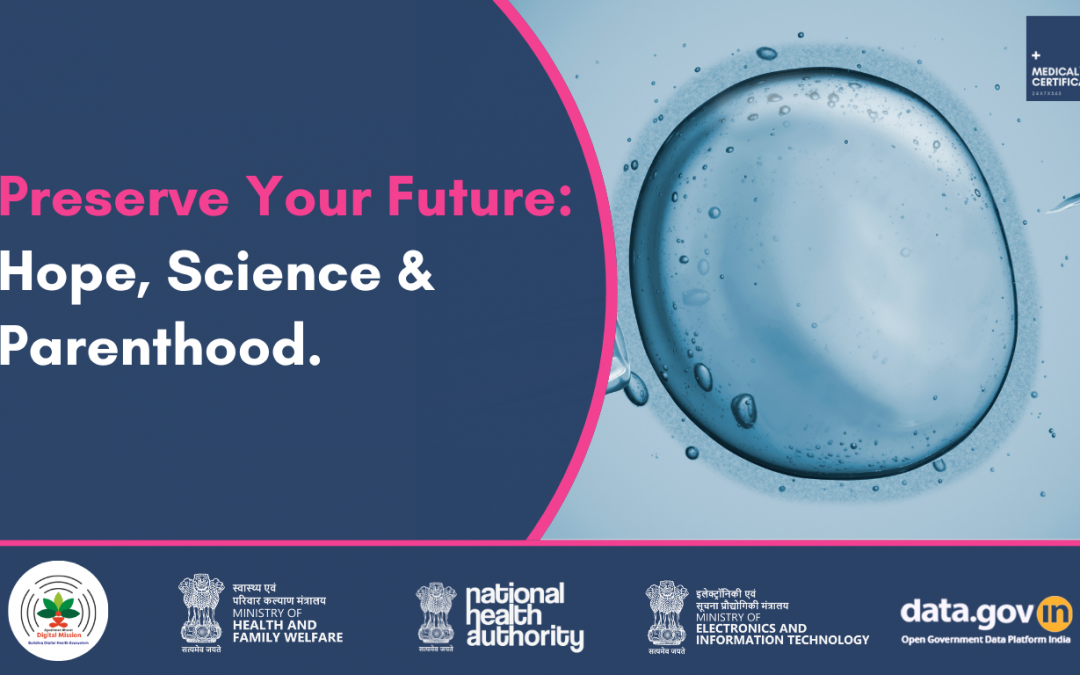In a world where dreams, life, health, and relationships determine the fate of individuals, then fertility preservation becomes a path of empowerment of control over reproductive life. Whether an unmarried female with a diagnosis of cancer, a couple wanting to postpone parenthood for personal or economic reasons, or others who desire gender-affirming treatment, fertility preservation brings promise of future biological parenting.
But what exactly is fertility preservation, anyway? Why is it important? Who should think about it? Let’s explore this to understand its science, choice, and hope.
What Is Fertility Preservation?
Fertility preservation, or oncofertility, is a process through which eggs, sperm, embryos, and reproductive tissues are frozen. It preserves the ability to conceive in the future. The followings are the popular forms of fertility preservation:
- Oocyte cryopreservation (Freezing of eggs)
- Semen cryopreservation (Freezing of sperm)
- Embryo freezing
- Freezing ovarian and testicular tissue (still highly experimental)
These treatments were originally designed for cancer patients undergoing chemotherapy or radiation, which has a high potential to destroy fertility. Nowadays, however, they are requested by individuals for cosmetic or social purposes, applicants for gender change, or individuals with genetic diseases that potentially jeopardize future fertility.
Why Is Fertility Preservation Important Today?
It is not only about reproductive freedom but it is also about autonomy, inclusion, and planning for the future in our own terms.
1. Delayed Parenthood
Most of contemporary life is characterized by delayed milestones. People are getting married but having children later because of career, financial instability, and many. The Centers for Disease Control and Prevention (CDC) showed a report in 2023,that the average age of first-time mothers in the U.S. is almost 27, down from 21 years of age in 1972.
However, biology doesn’t always wait. Fertility, particularly in women, declines with age
I am 35 years old. Egg freezing allows women to bank their healthier, younger eggs and be more likely to have a successful pregnancy that follows.
2. Cancer and Medical Therapies
Maybe the most important use of fertility preservation is in the treatment of young cancer patients. Chemotherapy and radiation are damaging the reproductive system. The American Society of Clinical Oncology (ASCO) strongly recommends people should be educated about fertility risks and preservation opportunities
A pioneering Human Reproduction research (Anderson et al., 2008) identified that about 80% of girls with cancer were concerned about future fertility. For most, a future for having children is part of their emotional healing and well-being after treatment.
3. Gender-Affirming Care
Transgender persons who undergo hormone therapy or gender-affirming surgery stand to lose their fertility permanently. Fertility preservation offers the promise of future biological parenthood.
A journal article in Journal of Adolescent Health (Chen et al., 2017) came into prominence by highlighting the importance of early fertility counseling for transgender adolescents, noting that fertility preservation before transition improves outcomes and satisfaction.
The Science Behind It: A Closer Look
Egg Freezing
Freezing eggs has advanced significantly. Slow freezing, which had previously cracked the eggs, is no longer used. The new technique, vitrification, froze eggs at high speed and had much greater success rates. In a Fertility and Sterility article published in 2022 by Cobo et al., the vitrified eggs are as good as fresh eggs for fertilization and pregnancy.
Success is not, however, guaranteed. The better the prospects are, the younger the woman is when she is frozen. Preferably, the eggs should be frozen below 35 years of age for best results.
Embryo and sperm cryopreservation
These are established and highly effective techniques. Frozen embryo technique consists of having the egg fertilized by the sperm and freezing it. The technique has been utilized since the 1980s and has resulted in thousands of successful pregnancies.
Sperm freezing is also cheap and easy. It’s also utilized by men who are receiving medical treatment or having a vasectomy, and can preserve sperm for years.
Ethical and Emotional Considerations
Fertility preservation is not a clinical choice—it is a very personal choice. It is an ethical, emotional, and occasionally even a cost-driven decision. For example, the freezing and storage of eggs are expensive, and sometimes the cost is between $5,000 to $15,000, with storage fees every year. In nations like India, even though the expenses are comparatively lesser, the treatment is inaccessible to most unless reimbursed by insurance or a special plan.
There are also a few ethical issues: Should women be provided with egg freezing as a company benefit, like some tech companies have? Is egg freezing empowering or coercing women to put off having children for work?
Also to be taken into account is the emotional burden of maintaining hope in frozen cells—and apprehension of whether or not they will function when required—is considerable. Counseling forms part of fertility preservation programs.
The Road Ahead: Policy, Access, and Awareness
Though its potential exists, awareness about options for fertility preservation is low. A 2021 survey in Fertility and Sterility showed that fewer than 30% of reproductive-age individuals were aware of egg freezing as an option and even fewer knew when and why to undergo it.
Policy interventions have to offer fertility preservation in a manner that is equitable and accessible. For instance:
- Requiring fertility counseling for all cancer patients prior to treatment.
- Increasing insurance coverage for fertility preservation, not only for medical but also for elective cases.
- Awareness campaigns among young adults, transgender populations, and medical professionals.
Conclusion: A Future of Possibility
Fertility preservation is the miracle of medicine in our time, providing individuals with the control to save one of the most intimate parts of their future. It’s a choice that’s rich in hope—hope for recovery following sickness, for family following turmoil, for parenthood following life’s detour.
Whether you’re 25 when making a career, 18 when having cancer treatment, or 30 when preparing for gender-affirming surgery—if you know what is available today can make a big difference in your life tomorrow.
Let’s build a society where everyone has the information, care, and access to maintain not only their fertility, but their desire to have children

